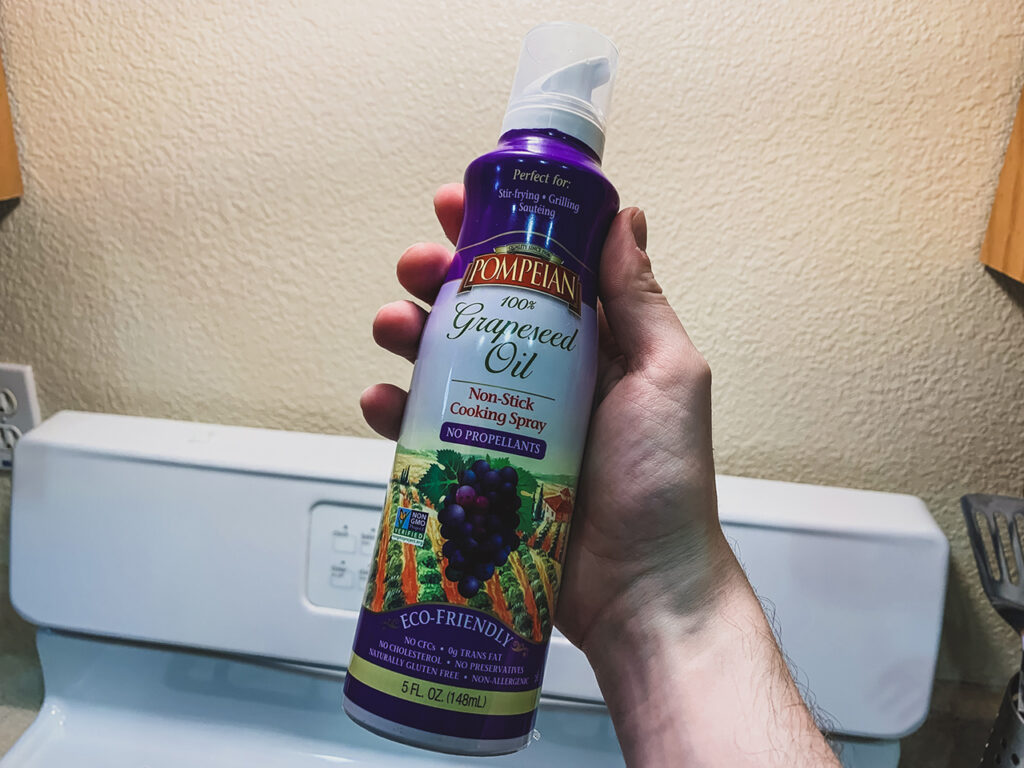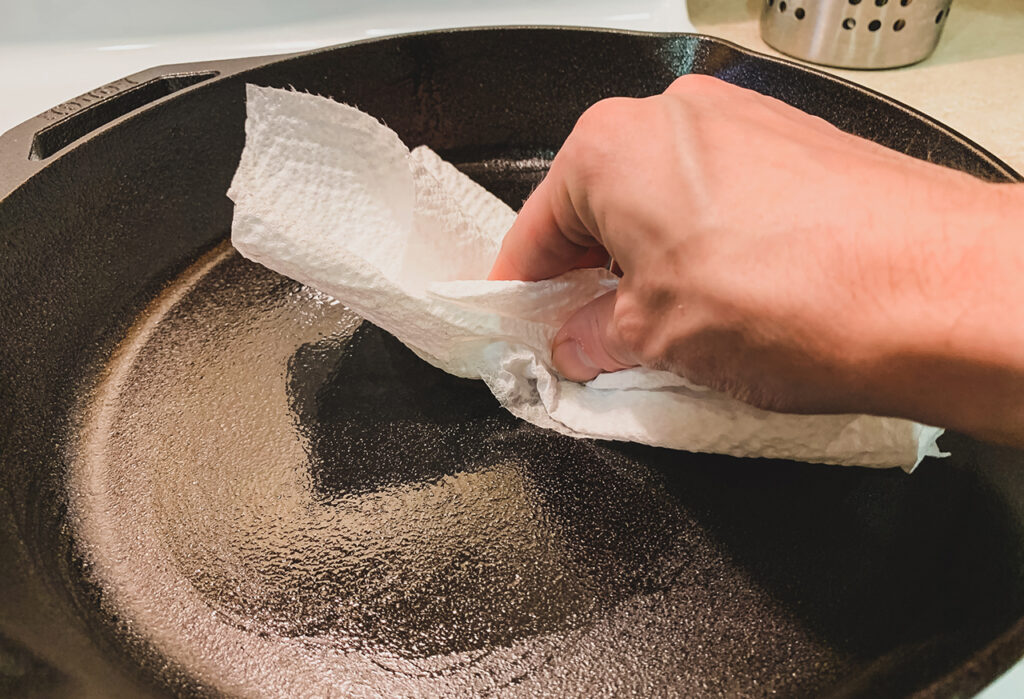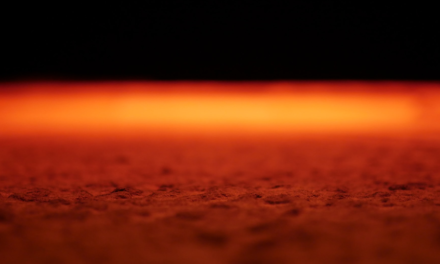Are you wondering how to season a cast iron skillet or pan?
Cooking with a cast iron pan is a tried-and-true way to incorporate flavor throughout your ingredients, but it all starts with a cast iron skillet that is adequately seasoned.
Seasoning a cast iron skillet is the process of baking oil onto the surface of your pan. This process of oil surfacing on your cast iron skillet is known as polymerization.
Follow the ten steps below to season your very own cast iron pan!
1. Set oven to 400 °F and add tin foil

Before preparing your cast iron skillet for seasoning, set your oven to 400 °F start preheating. You may want to open nearby windows and turn on fans and the stove hood fan, as the seasoning process may produce some smoke.
Keep a rack in the center of the oven for your pan, and another rack just below to layer a piece of tin foil to catch any potential oil drippings from your pan during the seasoning process.
2. Wash your cast iron skillet or pan

Before you apply a thin layer of oil to your pan, you’ll want to clean it first.
If your pan is new but unseasoned, it probably won’t have much to clean when it comes to grease or rust, but you can still give it a good rinse to clean any residues from production or shipping.
If you’re cleaning a used cast iron skillet to prepare it for seasoning, you’ll want to remove all layers of old grease and rust. To clean a pan, I use hot water and a dish scrubbing pad, but without the use of any soap.
3. Dry your cast iron pan or skillet

After you wash your cast iron pan, it’s essential to dry it thoroughly, top and bottom, before the next step of applying a layer of oil on the pan.
4. Cover your cast iron skillet with a layer of grapeseed oil

Now you’re ready to cover your cast iron skillet with a layer of oil.
There’s a wide range of oils with a high smoke point used to season cast iron skillets, but grapeseed oil is one of the most widely praised oil for use. After seasoning cast iron pans with everything from canola to vegetable oil, I’ve found grapeseed oil gives the most even, thick, non-stick coating on the bottom after seasoning.
Spray or drip a bit of oil onto your pan, top and bottom.
5. Wipe the grapeseed oil into your cast iron skillet or pan

After you’ve coated your cast iron skillet with oil, it’s time to wipe the oil into all its cracks and crevices. I use paper towels to wipe the pan from top to bottom, and you can also use a dishrag.
The purpose of wiping in the oil is to ensure you don’t have oil pooled anywhere but still cover with a thin layer throughout.
6. Set the cast iron skillet in the oven for 30 minutes

With the oven fully heated to 400 °F, place your cast iron skillet onto the middle rack upside down just above the tin foil you’ve put on another rack to catch any oil drippings.
Keep the cast iron pan in the oven for 30-45 minutes.
7. Spray and wipe in another layer of grapeseed oil onto your pan

After the cast iron pan has cooked in the oven for a full 30 minutes, pull the pan out from the oven and set on top of the oven on the range or another surface safe for high-heat objects. Be careful when pulling the cast iron skillet out of the oven, even with oven mitts and potholders, as the pan will be extremely hot.
After the pan has cooled for a few minutes, spray the pan with another layer of grapeseed oil and wipe into the pan with papers towels or dishrags.
8. Set the cast iron skillet in the oven again for another 30 minutes

At this point, your cast iron skillet still has areas where the oil hasn’t seared onto the pan, so the pan needs to go back into the oven two more times to coat the bottom fully.
Put your pan into the oven upside down for the second round of baking for 30-45 minutes.
9. Spray and wipe in the third layer of grapeseed oil onto your pan

After a full 30 minutes of baking, take your pan out of the oven, spray, and wipe it down with a third and final layer of grapeseed oil.
At this point, you should have a pretty solid, even covering of polymerized oil baked into the bottom of your cast iron pan after two rounds of oiling, but one more third round will help your pan really shine at its best.
10. Set the cast iron skillet in the oven for the third time for 30 minutes

Once your cast iron skillet is covered with grapeseed oil, put it back into the oven upside down for a third and final time for 30-45 minutes. Be sure to turn the oven off when you remove your pan for this third time.
After your skillet has been in the oven for a full 30 minutes, it’s okay to turn the oven off while leaving the cast iron skillet in the oven until the oven fully cools. This will only further season your pan with more bake-in time.
You’ve now learned how to season a cast iron pan or skillet for the first time!
Congratulations! Your cast iron pan is now seasoned.
After your three-part process of seasoning your cast iron pan through baking, the polymerization process should have taken place, leaving you with a glossy, beautiful film of oil baked into the surface of your pan.
What is the very best oil to season a cast iron skillet?
Oils with a high smoke point are best for seasoning a cast iron skillet. These oils include canola oil, vegetable oil, and peanut oil. From personal experience and having used many oils to season my cast iron pans, I’ve found grapeseed oil to give the most even coating and non-stick surface for cooking foods.





